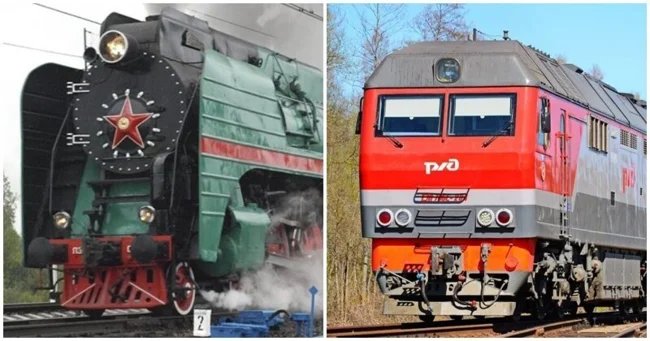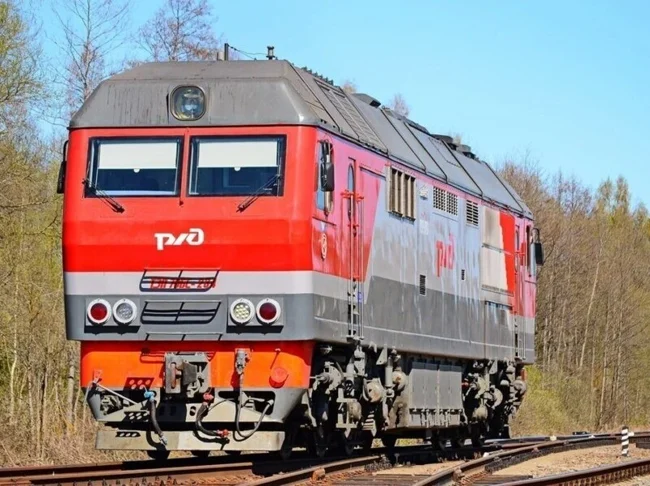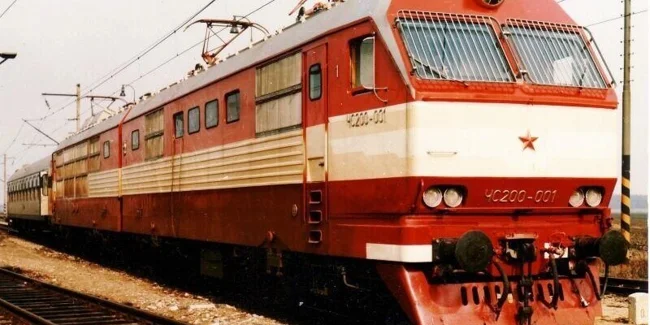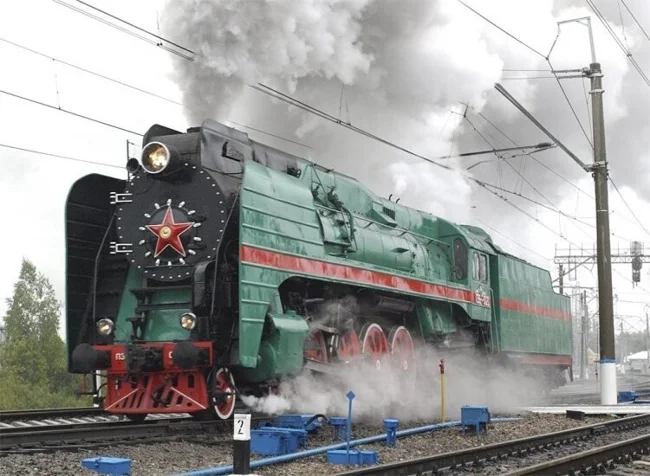Which is faster - a steam locomotive, an electric locomotive or a diesel locomotive (5 photos)
Some say that the future belongs exclusively to electric locomotives. But someone says the same about diesel locomotives, because they are an autonomous traction unit that can move without a contact network. But a steam locomotive can operate on pure mechanics and can run on either wood or coal. 
What speed can each of these types of traction develop? You can look at the example of those locomotives that were ever operated on Soviet railways.
Diesel locomotives 
The only passenger diesel locomotive is the TEP70BS, which is a deep modification of the Soviet TEP70. They have a design speed of 160 km/h.
But among diesel locomotives there is a real record holder - TEP80, whose design speed is 245 km/h! He managed to reach a maximum of 271 km/h.
For smaller trucks - 100 km/h for the 2TE116 and the same for the M62 and the modern 2TE25K(2)M. BUT 2TE10, depending on the modification, can easily travel 140 km/h. But there is no need for this - such speeds are not used in freight traffic.
Electric locomotives 
Now the locomotive that develops the highest possible speed (not counting the Sapsan, which is still a multi-unit rolling stock) is an electric locomotive. We are talking about such as the ChS200, which has a design speed of 220 km per hour, and a maximum service speed of 200. The modern EP20 can also reach speeds of up to 200 km/h.
The EP, after identifying defects in the trolley, limited the maximum speed to 180 km/h
Modern passenger electric locomotives most often have a design speed of 160 km/h (EP2K or EP1). Freight trains have lower speeds and electric freight locomotives do not need a design speed of 160 km/h, so for freight trains the maximum is 110-120 km/h, while actual speeds very rarely exceed 90 km/h.
Steam locomotives 
For the general public, a steam locomotive is not the fastest machine. The most popular freight mainline steam locomotive "L" had a design speed of 80 km/h, the passenger P36 - 125 km/h.
In this section there was a kind of record holder - 2-3-3B, which gave a test result of 180 km/h. It is also worth noting the IS20-16 with a streamlined body - it could be accelerated to 155 km/h. 
In principle, accelerating a locomotive of one type or another to approximately 200 km/h is not a problem. But we must not forget about the cars, the chassis of which should not maintain these 200 km/h.
But the most important thing is the roads, which should allow you to travel at such a speed. There are not many places in the country where you can drive 200, or even 160. Increasing the speed of traffic is a complex issue.
